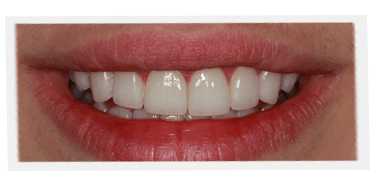
Magnification changed everything about dentistry. We went from being limited by human sight, to suddenly having an entire constellation of information available to us through magnification. And this has made big impacts in the world of cosmetic dentistry. In my book, A Guide to the Perfect Smile, I talk about this, and how it led to some revolutionary changes in dentistry, especially with veneers, crowns, bridges, and dental implants. Check out the excerpt below for your enjoyment.
“Getting a Better Look”
It’s amazing what a few years of experience can do to change your perspective.
I was very excited when I got my first chance to do some actual clinical work during my training at dentistry school. It was around 1975. My assignment was to take a mold of someone’s teeth and make a crown to a tooth.
This was my big day, the day I was to show my assignment to the professor in charge of inspecting our workmanship, the day my brilliance as a student was sure to be recognized and entered into the annals of my school.
When I met the professor I was even more excited. Here was an older gentleman with curly white hair who looked like a more academic brother of Santo Claus. Surely I was going to pass this assignment with flying colors.
After the briefest of greetings, he took my mold and looked at it closely. He didn’t seem the least bit impressed. I started to squirm when his lack of adulation turned into a look of concern.
“Let me take a close look,” he said. Then he did something I had never encountered in my training: He flipped magnifying loops over his already thick glasses. Santa’s brother had morphed into Groucho Marx with a thyroid problem.
“This is absolutely unacceptable,” he grumbled a few moments later. “You are going to have to redo this completely” – whereupon he gave me some very specific instructions. I couldn’t accept his assessment. I was so frustrated. I remember complaining about the situation to my long-suffering fellow students. “Here I am, a young guy with great eyesight, and who do they give me to but an old guy who can’t even see properly.”
Later I realized what an inspiring teacher he was. At that time it was rare for dentists to work with magnification. I was too unpolished to realize that this old guy was ahead of his time, a very skilled dentist teaching kids great work.
Today, magnification is routinely used by dentists. The principle is that the greater the magnification, the better your dentistry will be. The tradeoff, however, is that the greater the magnification, the harder it is to actually do the work. Why? Because you see more and you see less. You see more of what you’re working on and your hand movements have to be that much more precise. But you see less- less of the field, of the area around the part you’re working on.
All this means that the dentist with more magnification is not necessarily a better dentist. The challenge is for the dentist to get the right amount of magnification for their hands and eyes to have the right amount of control, while not losing a sense of the field.
Today, 4.5 magnification is considered strong but useable. And some dentists work with microscopes. They’re not actually looking into the patient’s mouth directly. Their hands are in the patient’s mouth, but they are watching a monitor.
Today’s dentists who have mastered the art of working with magnification are able to do particularly precise and beautiful work in such procedures as adding porcelain veneers, doing microsurgery on gum lines, and even performing deep root canal surgery.”



